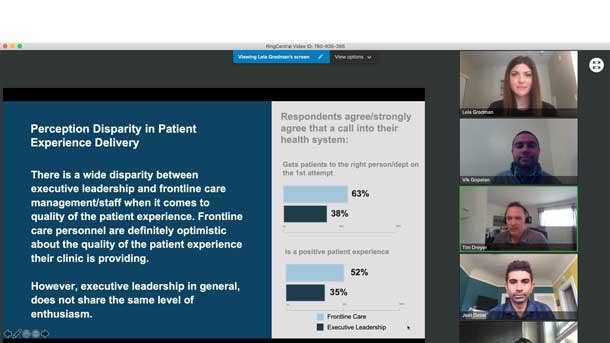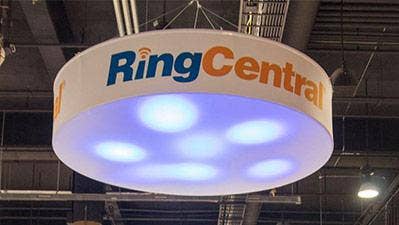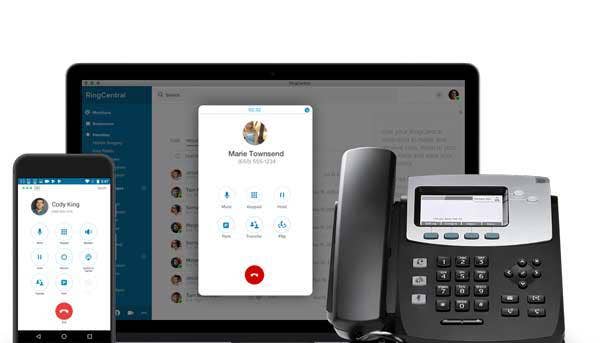RingCentral’s Zane Long: UCaaS Opportunity In 2021 Is ‘Still a Land Grab’
“It’s not too late! … [Partners] have to step on the pedal” and now is the time for even more focus on the UCaaS opportunity in 2021, RingCentral’s channel chief Zane Long tells CRN.

Sharpen UCaaS Focus
Cloud-based IT solutions have been on the rise for years, but there’s nothing like a global pandemic to shine a bright light on the importance of cloud-powered, work-from-anywhere solutions. COVID-19 set the Unified Communications as a Service (UCaaS) and collaboration markets on fire last year, but that doesn’t mean it’s winding down by any means, according to Zane Long, senior vice president of global channel sales for RingCentral.
In fact, solution providers are just scratching the surface of the cloud-based UC opportunity, with a market penetration of about 14 percent, Long told CRN. Now is the time for partners to learn and then lean into UCaaS, he said.
Despite the pandemic, RingCentral’s enterprise, midmarket, and channel business increased significantly in 2020 – a sign that many RingCentral partners were already excelling in the UCaaS space. Now, the provider will continue to reinforce and strengthen its channel programs to help partners keep their focus on communications strong.
CRN caught up with Long about the current UCaaS market, technology partnerships, and what solution providers should set their sights on in 2021. Here are excerpts from the conversation.

How did COVID-19 impact RingCentral’s business last year and how crucial were partners in anchoring the business?
Without question, the channel program continues to be a key driver of our upmarket success. [In Q3 2020] Channel annual recurring revenue increased 59 percent year over year to $419 million -- that kind of growth is pretty significant and that’s due to the partners’ contribution. Partners continue to look at the program that we have built with Channel Harmony and the Ignite program that gives partners more control of the sales cycle. That contribution continues to grow due to maturity of the relationships, but also because the customers looking to move from the premise into the cloud are being guided by partners that we call trusted advisors to look at RingCentral as the choice to help them work from anywhere. When you look at the midmarket and enterprise customer segments, this is where the growth has been the most significant. Enterprise annual recurring revenue increased 55 percent year over year to $401 million.

Ten months into the pandemic, have customers already placed their bets on their chosen communications products?
I believe that what has occurred here with COVID-19 has accelerated the decision for customers to move away from the premise-based environment into cloud due to all the benefits you get from a cloud-based product, the flexibility and the reach globally. The acceleration in our own business has clearly been because these companies were faced with an issue they needed to rectify immediately because their employees where, in some cases, 100 percent working from home. Let’s assume for a moment that we have a return to the office of about 50 percent. That continues the acceleration, doesn’t it? You’ll have to still fully equip everyone with a work from anywhere environment -- what we now know is a 14 percent penetration with a $50 billion dollar global [total addressable market] TAM -- there’s still a long road ahead of us to convert customers.
I believe we are still deep into the momentum and will be that way for many years to come. I don’t believe we are ever going back to what was happening prior to COVID-19, where people where about 90 or in some cases, 100 percent utilizing their office spaces. The world has changed, and I don’t believe we are ever going back.

With RingCentral’s three-year old Channel Harmony program and the IGNITE! Partner Program kicking off in 2020, how is the company strengthening its channel focus?
Really, we are seeing the maturation of the partners that we have brought into organization. When you look at some of these bigger partners -- what we call strategic partners -- they are very seasoned. We are getting more partners onboarded and hiring a lot of new people to support these entities.
There’s also another grouping of partners in areas such as Spain and Italy and other locations we are looking to get into -- all those markets have opportunities for revenue growth. Then we have the partners that have been with us for 3-5 years. Even in those organizations, we are continuing to strengthen and mature the programs we have in place. We really made a concerted effort in this virtual environment to do something we call a Partner/Customer forum, which we do as a benefit to our partners. It’s a webinar where several partners will invite several interested customers to learn more about UCaaS so when that customer is ready, they can make an educated decision about RingCentral UCaaS. We did over 60 of those in Q3 alone. We used to do those in all the NFL cities, but now we can do them virtually and, in some cases, get higher participation. There’s been a lot that has happened this year that’s allowed us to continue to grow the partner program and get more partners deeply focused on RingCentral first.

How important are RingCentral’s partnerships with fellow technology providers, and will these partnerships continue to be a big part of the company’s strategy?
It wasn’t only customers looking for a solution, partners also recognized where the world was headed with work from home products. [Technology] partners are wanting to participate in a much more meaningful way. Looking at the partnerships we announced this year [with Avaya and Vodaphone Business], they were based on RingCentral being a leader. It’s a really good example of companies like Vodaphone realizing how meaningful the RingCentral product set is and their ability to execute against that. [Vodaphone] has 30 million mobile business customers and a really large UC install base … and Avaya has the largest on-premise UC install base with almost 100 million seats. You have to put these all together along with that momentum and change with where the world is headed because these companies clearly recognize they want to be a partner with RingCentral and they also recognize the dynamics of what is happening in the marketplace.
Without question, these relationships are going to be an important part of RingCentral’s strategy. We are a partner-oriented company.

Where are the big areas of opportunity for partners in 2021?
I would say … pay attention to what’s happened [in 2020] and look at what COVID-19 has created. Partners -- those that were focused on UCaaS prior to that are the ones that had the most success in the last several quarters. They were already set up with the understanding that customers were going to migrate away from premise based into the cloud and move to UCaaS as part of their future and how they wanted to be able to use communications. But, it’s not too late! 14 percent of a $50 billion dollar TAM means there is still a lot of road in front of us and a tremendous opportunity. What I’ve been saying to partners is to find ways to increase the focus and serve the customers that have not made that transition to the cloud. Make sure they have the right information and customers can make up their mown mind as to where they want to go. [Partners] have to step on the pedal and now is the time for even more focus on what’s right in front of us -- it’s still a land grab.
Without our partner’s contribution, we wouldn’t be the RingCentral you see today. We are going to continue to work very deeply with the partner community to grow the business.